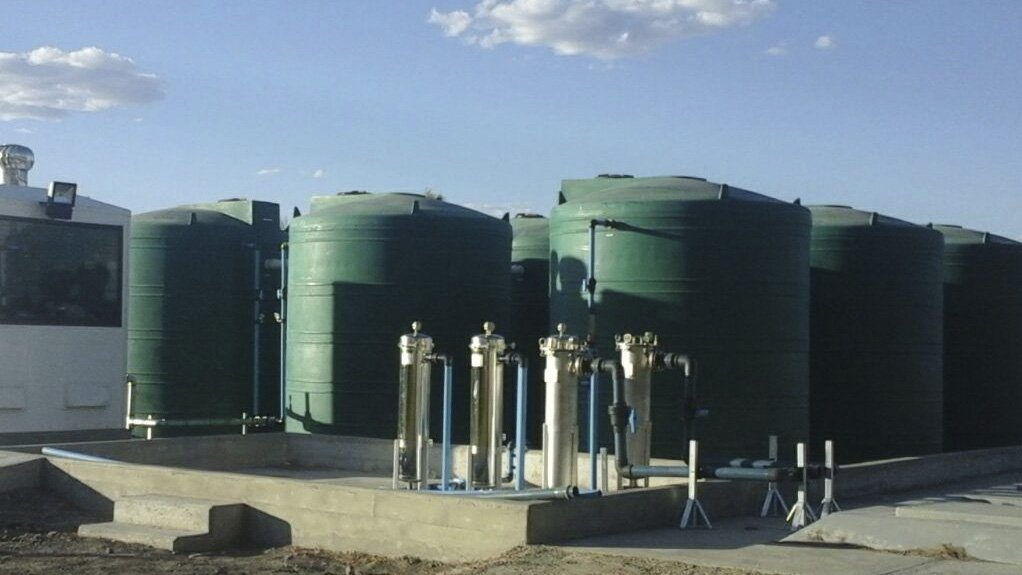Using technology in sustainable wastewater treatment, combined with the creation of its own bacterial strains developed in-house, South Africa-based biological wastewater treatment solutions provider SewTreat can respond to the demand for water management across sectors.
SewTreat spokesperson Theunis Coetzer points out that the company offers specialised, modular biological wastewater treatment plant products that are tailor-made for the South African and African market.
All SewTreat products are manufactured locally at the company’s 5 000 m2 manufacturing facility in Witbank, Mpumalanga.
“We are very proud to mention that 95% of all components used in the manufacturing of the wastewater treatment facilities are proudly South African,” he asserts.
Coetzer highlights that the company’s approach is based on return activated sludge technology that incorporates submersed aeration media. He adds that this enhanced bacterial action ensures a highly effective treatment process boasting a very low carbon footprint, minimal capital input and low maintenance requirements.
Product Offering
“Our experience with large traditional wastewater treatment facilities is that it is very expensive and the technology is gravely outdated,” Coetzer asserts. The company has developed several plants and can now provide industry with low-impact, cost-effective and efficient wastewater treatment plants because of the company’s continued research and development.
The first plant is the plastic high-density polyethylene tank wastewater treatment plant. Coetzer explains that the plastic range uses plastic Jojo-type tanks that are connected in series or parallel, depending on site space requirements or layout. The plant is wholly constructed and cold commissioned before delivery to a client’s premises.
“We developed this range based on a need we identified in the market for a more cost-effective solution for sewage treatment. Although plastics plants are cost-effective in terms of capital expenditure, this does carry very high shipping costs and, therefore, is not recommended for installations outside South Africa.”
The containerised wastewater treatment plant is well suited for rugged African conditions, says Coetzer. The concept is based on a plug-and-play design, and is designed for ease of transport, security and modularity, taking into consideration that the plant might be moved to various locations, he explains.
“Our recent upgrade of the design makes this a very competitive option for on-site wastewater treatment. The plant is wholly constructed and tested at our Witbank facility which ensures that all boxes are ticked in terms of quality control procedures,” he explains.
The containerised plant has a life span of 15 to 20 years, which is well suited to a plug-and-play solution, with installation requiring only the connecting of feed pipes to the containerised wastewater treatment plant, he adds.
The third plant is the civil constructed wastewater treatment plant, and Coetzer illustrates that these plants are designed and constructed mostly for large-flow industrial and housing development applications.
“The plants are aesthetically satisfactory, are constructed underground, can be covered with vegetation and are entirely designed and constructed to exact civil engineering requirements. These plants boast several advantages for clients, such as subcontracting civil construction to local contractors to reduce construction costs,” he comments.
Moreover, Coetzer explains that, for the civil constructed wastewater treatment plant, provision can also be made for easy plant expansion through simple modular and common wall construction and that, if the plant is gravity- fed, the system can operate without electricity for up to 48 hrs. “This makes the product an effective alternative for remote operations, for countries with unreliable power supply or where no municipal connection is available.”
Coetzer asserts that it is SewTreat’s being able to merge process engineering, which includes mechanical and some civil elements, very effectively with microbiology that sets it apart from its competitors.
“We are constantly looking for ways of ensuring more effective bacterial action in a reduced retention time and reduced power consumption, as these two elements are determining factors in terms of cost to the client,” he concludes.
Edited by: Zandile Mavuso
Creamer Media Senior Deputy Editor: Features
EMAIL THIS ARTICLE SAVE THIS ARTICLE
To subscribe email subscriptions@creamermedia.co.za or click here
To advertise email advertising@creamermedia.co.za or click here













